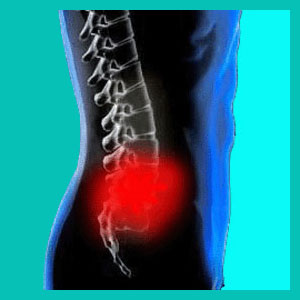
Lumbar herniated disc diagnosis is one of the most prevalent problems in the healthcare system and is also one of the most profitable diagnoses in the medical community. Herniated discs in the lower back are dollar-for-dollar the best performing diagnosis when rated on the scale of how much money the condition will bring into a medical office.
Herniated disc treatment is so diverse and long lasting for most patients that a doctor or chiropractor can hear that cash register ringing every time a new patient walks through the door. I know this well from a patient’s perspective, since my finances were drained dry for 18 years by care providers of all types who did nothing to cure my pain, but certainly enjoyed the money I brought into their bank accounts.
This critical essay examines the process of diagnosing lumbar intervertebral herniations.
Lumbar Herniated Disc Diagnosis Issues
“You have a lumbar herniated disc.” This is a dreaded pronouncement for the vast majority of people since the very words strike fear into the hearts of every back pain sufferer. Bulging discs have nasty reputations as treatment–resistant pain syndromes which seem to haunt patients for decades and eventually require surgery.
If you take the time to detach yourself from the myths and learn the facts about herniated discs, you will surely see that nothing could be farther from the truth. Here are a few facts to get you headed in the right direction:
The majority of bulging discs are completely asymptomatic and harmless.
Symptomatic disc bulges will typically resolve without any treatment.
Acute disc concerns which are structurally-based usually respond incredibly well to appropriate treatment.
Most long-term disc pain complaints are not due to a particularly stubborn herniation, but instead exist because the actual source of pain has been misdiagnosed.
Diagnosing Lumbar Herniated Discs
Research has clearly shown that the majority of disc abnormalities are coincidental to any back pain which may exist. Herniated discs are incredibly common and most exist unnoticed in the spine, until an accident or injury leads to their diagnosis. The ironic part is that in many cases, the injury has created pain in surrounding soft tissues and done nothing to injure the actual spine. The herniation has been there all along. However, despite degenerative evidence left near the disc, the bulge is almost always blamed as coming from the recent injury. It is ridiculous.
Of course, a serious injury can spontaneously herniate a disc and is likely to enact painful symptoms for 2 to 8 weeks. However, the idea of a disc bulge creating pain which defies all treatments for decades is typically untenable.
Guidance on Lumbar Herniated Disc Diagnosis
Herniated lumbar discs can be diagnosed via advanced spinal imaging, such as CT scan or MRI. They can never be positively identified by physical exam alone. Typically, lower back pain treatment for a herniated intervertebral disc goes like this:
The patient goes to the doctor and is diagnosed with one or more herniations. They begin a variety of conservative treatments, including drugs, physical therapy and chiropractic. Over a year or two, they feel better sometimes, but never really heal 100%. They inevitably have relapses which land them in bed for weeks on a regular basis for the next few years. Eventually they endure disc surgery and may or may not feel immediately better. However, the pain virtually always returns, in a week, a month or a year.
The reasons for this disastrous, but incredibly common profile?
Possibly, the procedure may have gone poorly or the disc may have re-herniated after healing.
In other cases, the disappointing surgical results come down to simple misdiagnosis. Ignorance. Iatrogenesis.
In some cases, misdiagnosis is actually a kind word used to hide purposeful medical theft simply for the sake of the almighty dollar.
In very few cases, the continuing pain is due to a disc which is truly that problematic.
Herniated Disc > Herniated Disc in the Lower Back > Lumbar Herniated Disc Diagnosis





